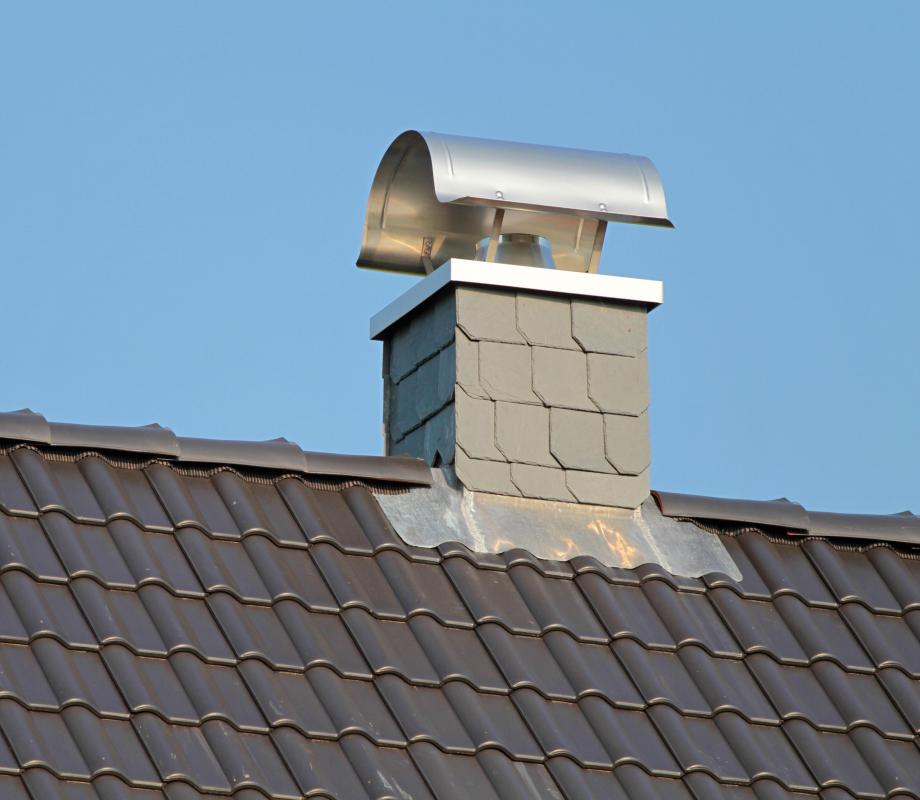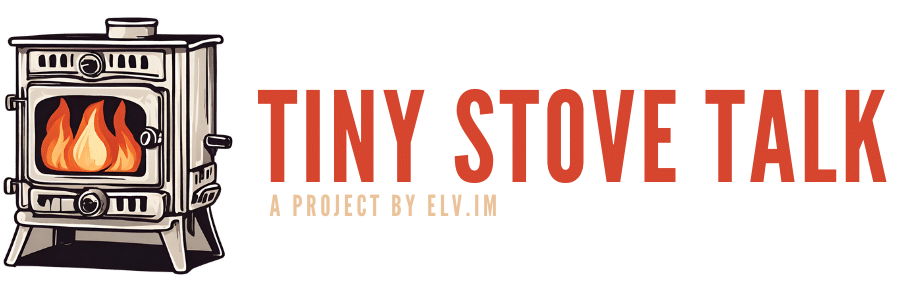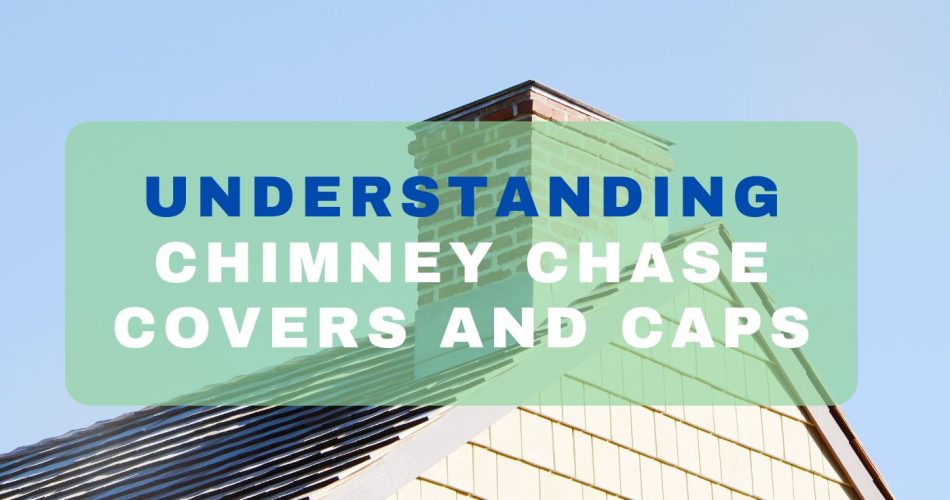For a chimney to stay strong and work properly, you need to pay attention to its many different parts, especially the chimney caps and chimney chase covers. While working on my house, I realized how important these elements are in keeping your chimney up-to-date and clean.
There were a few times when an issue could have been resolved with some simple maintenance, but it was too late by then. So today, I will share why you should always check up on your chimney caps and chimney chase covers. You will want them intact if you want your fireplace to work well.
Understanding Chimney Caps
Discovering water and debris in my fireplace was terrifying, but it led me to get a chimney cap. A chimney cap is a protective device that covers your chimney’s flue. This allows smoke to escape while keeping everything outside from entering the home. This is essential for ensuring your chimney stays clean and safe. For example, installing a chimney flue cap prevented water from entering and reduced drafts. It was also helpful for deterring birds from nesting.
Types of Chimney Caps
Different types of chimneys require different materials, designs, and sizes. I’m going to give you details on the most popular types of chimney caps with an emphasis on their materials, designs, and sizes:
Materials
- Stainless Steel: It’s popular because it’s durable and resists rust and corrosion. Basically, all weather conditions are fair game for stainless steel caps. They can also come with warranties because of how long they last.
- Copper: Copper caps do best looking beautiful as they age. You’ll see a patina form over time, which will make your home look amazing if done right. Rust won’t be an issue, but longevity might be if you live somewhere really harsh.
- Galvanized Steel: If you’re trying to save money, these are perfect for you. After being coated with zinc, they become resistant to rust. However, galvanized steel doesn’t last as long as stainless steel or copper, so you’ll need replacements after years of use.
- Aluminum: Being lightweight and corrosion resistant makes them prime candidates for homeowners who experience mild weather conditions.
Designs
- Single-Flue Caps: These cover individual flues one by one, making them great choices if your chimneys have separate ones for each fireplace/appliance. They can be attached directly to the flue tile or the crown of the chimney.
- Multi-Flue Caps: Unlike single-flue caps that only cover one, multiple-flue caps can protect entire tops of chimneys, offering full protection to structures with multiple openings.
- Custom Caps: Maybe your house isn’t exactly standard built. That would suck when getting a cap since you’d have to get a custom one, but on the bright side, they can be tailored to match your home’s aesthetic.
- Decorative Caps: Instead of looking only at functionality and safety, some people want their caps to look good. For those, we have decorative chimney flue caps. They’re shaped, designed, and finished in intricate ways that match a home’s architectural style.
Sizes
Your home will affect the size of the chimney flue cap you need. To ensure you get full protection, measure your flue or chimney accurately. Sizes can range from small for single flues to large for multi-flue chimneys.
After understanding what your chimney needs, make sure you take into account the local climate and styles you prefer. If done right, picking a chimney cap will not only enhance the safety of your chimney but also make its exterior amazing.
Understanding Chimney Chase Covers
While chimney caps cover the flue from the top, chase covers are necessary to protect the entire structure of a wood-framed or wood-sided chimney chase. These protective covers keep water out and prevent decay or mold growth.
Chimney chase covers completely seal off the top of your chimney so that water, snow, and debris can’t get inside the flue, where it would cause damage.
Types of Chimney Chase Covers
The material you choose for your chase cover will determine how durable it is and how much maintenance it will need over time. Here’s what you should know about each common type:
| Material | Durability | Maintenance | Cost |
| Stainless Steel | Stainless steel is highly resistant to rust and corrosion, making it one of the longest-lasting chase cover materials. It also withstands rain, snow, and high humidity without breaking down. | Easy-to-maintain stainless steel might only need replacement after several decades if properly installed. | Though more expensive initially than other options, its long lifespan makes stainless steel a cost-effective choice in most cases. |
| Copper | Copper is another premium option because it doesn’t rust and usually lasts as long as your home does. As copper ages, it develops a green patina many homeowners find attractive. | Little maintenance is required for copper, which is known for its longevity. | Copper tends to be a pricier option due to its aesthetic appeal and virtually timeless lifespan. |
| Galvanized Steel | To prevent rusting on galvanized steel — which isn’t quite as durable as stainless steel or copper — manufacturers apply a layer of zinc coating. But once this coating wears off, expect galvanized steel to start corroding quickly in certain environments. | Expect higher maintenance with galvanized steel; some experts suggest replacing these covers every five to 15 years, depending on their condition at this point in time. | If you’re looking for an affordable option initially but aren’t sure how long you’ll stay in your current home, galvanized steel is a good bet. |
| Aluminum | Aluminum isn’t known for rusting or corroding, so it’s quite durable. However, it is softer than copper and stainless steel and can be damaged by the elements more easily. | You won’t need to tend to an aluminum chase cover very often — they resist most environmental factors. | Though not as cheap as galvanized steel, aluminum covers are cost-effective, considering their durability. |
After considering it, I decided to get the stainless-steel chase cover. These things are pretty durable and often require little to no maintenance, perfect for my area’s temperamental weather. It might’ve cost more upfront compared to other options, but in the long run, it was definitely worth the investment.
The chimney chase cover solved our leak problem. This protective addition saved the structure and prevented mold and decay, too.
Chimney Caps and Chimney Chase Covers are Best Together

If you have a system that keeps your chimney safe, it doesn’t matter how hard it rains on your roof. You’ve got these two that will work together to help you:
- Enhance the protection of your chimney from water damage
- Prevent animal nesting and related hazards
- Improve draft and fire safety
- Protect against downdrafts and debris accumulation
- Increase longevity of chimney structure and lining
Chimney Caps and Chimney Chase Covers Installation Considerations
There are plenty of things to consider when it comes to picking and installing a chimney cap or cover. Here are the most important factors that you should think about:
Proper Sizing and Fit
- Correct Measurements: Inaccurate measurements may lead to a chimney cap or chase cover that can’t protect your home from the elements or wildlife or even impact how well your chimney drafts.
- Custom Solutions: Use a custom-designed cap or cover if you have an unusual or irregularly shaped chimney like mine. They’ll fit perfectly and look great while doing so.
Material Selection
- Durability and Longevity: Stainless steel and copper are great choices since they will last longer than others under pressure from weather, rust, and corrosion. Galvanized steel might need replacements more often than stainless steel.
- Environmental Conditions: The specific environmental conditions of your area (high humidity, coastal salt air, heavy snowfall) will impact which material is best for you.
Design and Aesthetics
- Compatibility with Home’s Style: While functionality is very important, don’t forget about aesthetics. The design of the chimney cap or chimney chase cover could be visible from the street and affect the overall look of your home. So make sure that the design and aesthetic of the chase cover complement your house’s style.
- Special Features: Some caps and chase covers have special features for wildfires. There are also some for resolving issues with updrafts/downdrafts.
Professional vs. DIY Chimney Chase Cover and Cap Installation
- Expertise and Safety: You want to make sure that whoever installs this does it correctly so nothing bad happens in the future because of poor installation methods.
- Warranty and Reliability: Warranties might only apply if professionals install them. They’re also less likely to need repairs/replacements if installed properly in general.
Maintenance and Inspection
- Routine Checks: Things get worn over time, no matter what the quality is. So, even if you have high-quality caps/covers, still check them regularly to avoid surprises down the line.
- Ease of Maintenance: Some designs are easier to inspect and clean than others. Consider this when picking one since an easier time maintaining them can lead to optimal performance.
Legal and Safety Regulations
- Building Codes and Regulations: There might be specific requirements/restrictions you have to follow before installation.
- Fire Safety: Make sure the cap or cover doesn’t impede how well your chimney vents smoke and gases. You need proper ventilation to avoid fire hazards/carbon monoxide buildup.
Maintenance Tips
To ensure that your chimney chase covers and caps are well-maintained, here are some helpful tips you can follow:
1. Conduct routine inspections of chimney caps and chimney chase covers.
Ensure that you dedicate time to checking your chimney caps and chase covers routinely. Here are some of the schedules I follow:
- Annual Inspection: At least once annually, conduct a thorough inspection. I check every fall to ensure everything is in working order before the heating season begins.
- After Severe Weather: Inspect after extreme weather conditions like heavy snow, storms, or high winds, which can dislodge or damage the cap or cover.
- Visual Check for Obstructions: Look for signs of blockage, such as leaves, twigs, or nests that could clog the chimney.
2. Follow cleaning and maintenance best practices.
When cleaning or maintaining your chimney chase covers and caps, follow best practices. Here are some that I apply in my cleaning and maintenance routine:
- Regular Cleaning: Annually remove debris and soot buildup using a brush designed for chimney cleaning.
- Rust Removal & Prevention: Metal caps and covers should be checked regularly for the formation of rust spots. I’ve used a wire brush to clean off rust and applied a rust-inhibiting spray to areas that began showing wear.
- Sealant Application: Annually check the sealant around the edges of the chimney chase cover. Apply more as necessary to prevent water intrusion.
Check for Signs of Wear and Consider Replacement
Prompt replacement of worn chimney flu caps and chimney case covers is essential. It can prevent any accidents from happening. So, be prompt to check for the signs and replace worn-out caps and covers on time. Here are some of the signs that you should watch out for:
- Visible Rust & Corrosion: Significant signs of rusting or corrosion on a metal cap/cover indicate that it needs replacement. I noticed my galvanized chase cover starting to form rust within a few years of installation, which prompted me to switch over to stainless steel.
- Deterioration/Warping: If there are any signs of bending, warping, or breaking apart — it’s time for a replacement to continue protecting your chimney.
- Water Leakage: Signs of water in your fireplace or attic near your chimney can point you toward a failing cap/chase cover. I once noticed water stains on the ceiling above my fireplace, revealing that my chase cover was not properly channeling water away from my house structure.
- Improper Fit: A cap/cover that no longer fits securely due to damage or structural change of the chimney needs to be replaced to prevent animal entry and water damage.
Chimney Cap and Chimney Chase Cover Design Trends You Don’t Want to Miss
The times are changing. And so is the design of chimney caps and chase covers. There have been many changes to these products over time, but it’s for a good reason. Technology advances, more customization options, and a focus on environmental sustainability contribute to the designs we see today. Here are some of the latest trends:
Eco-Friendly Materials
As people become more conscious about our environment, manufacturers have started adjusting their materials to leave less of an impact when they break down or deteriorate.
Better Durability
Over time, weathering can mess up your chimney cap badly. Some even rust! Thank god there have been great strides in making them tougher.
Customization
Chimney caps weren’t always as special as they are now. Thanks to consumer demand, they now come in all kinds of shapes, sizes, finishes, and designs so you can match your chimney cap with the rest of your house’s exterior features.
Multi-Functionality
Different companies have found ways to improve airflow dynamics for a better burn or make sure if it gets really windy out, you don’t get any downdrafts at all.
Energy Efficiency
People still care about how much energy is being used, though! These new designs help reduce heat loss, ultimately saving you money during those cold winter months.
These trends reflect what consumers look for nowadays: durability, aesthetic appeal, advanced technology, and eco-friendliness.
Common Misconceptions About Chimney Caps and Chimney Chase Covers
Addressing common misconceptions about chimney caps and chase covers can help homeowners make informed decisions about their chimney maintenance. Through personal experience and research, I’ve encountered several myths that need clarification. Here’s a closer look at these misconceptions and the facts that debunk them, peppered with insights from my journey:
1. Chimney caps and chimney chase covers are only decorations.
Insight: I once believed that chimney caps and chase covers were for enhancing the chimney’s look. However, I quickly learned their critical roles in preventing water damage, blocking debris and animals, and even improving chimney draft. Their functionality far outweighs their aesthetic contribution.
2. All chimney caps and chase covers are the same.
Insight: Choosing a chimney cap and chase cover was more complex than I anticipated. The variety in materials and the specific design needs of my area’s weather conditions made me realize that there are different caps and covers. All you need is to look for the right fit.
3. Installation is easy, so you can DIY.
Insight: Wrong. After considering a DIY installation, I realized the importance of getting it right. I made a lot of mistakes and ended up getting a professional to do it. A professional installation ensured my chimney cap and chase cover were correctly sized and securely fitted, avoiding issues like poor drafting or water leakage.
4. Chimney caps can affect the draft in your chimney.
Insight: I was concerned that a chimney flue cap might restrict airflow in my chimney. However, just because one is in place doesn’t mean you’ll lose your fire’s oxygen supply. A well-chosen fireplace-cap duo helped improve our chimney’s draft by protecting it from downdrafts. It also kept the flue clear of obstructions.
5. Chimney caps and chimney chase covers do not need maintenance.
Insight: Assuming they were set-and-forget components was a mistake. Regular inspections revealed a small debris buildup one year. It meant I was not cleaning enough to maintain optimal function.
6. They’re an unnecessary investment.
Insight: The relatively modest investment in a chimney cap and chase cover pales compared to the costs of repairing water or animal damage. This was a lesson in preventative spending that has saved me significantly over the years.
7. Chimney caps cause creosote buildup.
Insight: Initially, I worried about increased creosote, but research and experience showed that proper ventilation is more critical to managing creosote than whether or not you have a cap.
8. Chimney chase covers are only for certain chimneys.
Insight: When I discovered that a chimney’s chase is essentially a boxy cabinet built around it for aesthetic purposes, I thought, “Why would this require special protection?” Turns out any chimney can benefit from a chase cover’s protection against water and the elements, extending the chimney’s lifespan.
9. One-size-fits-all chimney caps.
Insight: When measuring my chimney, the notion of one cap fits all quickly flew out the door. We had to custom-size mine to ensure effective protection and performance. It highlights just how important precision in chimney care is.
Conclusion
At this point, I’ve probably given you quite the brain exercise with everything I’ve said. But it was necessary because chimney flue caps and chimney chase covers play a crucial role in maintaining longevity for your chimneys. So don’t wait any longer! Take action now by ensuring you have the best protection possible!
Additional Resources
Aside from chimney caps and chimney chase covers, another important part of your chimney system is chimney liners. I shared my experience with installing one here.





[…] Chimney cap: Make sure you have one that isn’t damaged or clogged with debris — not having one makes it easy for water or animals to get inside. […]
[…] Understanding Chimney Chase Covers and Caps […]